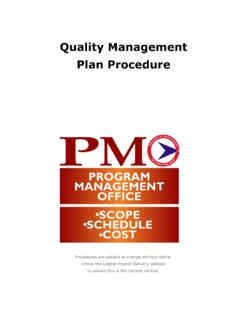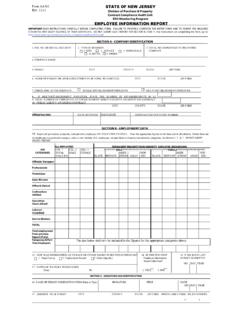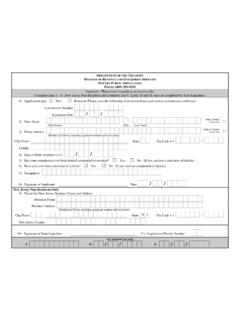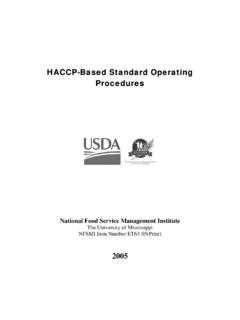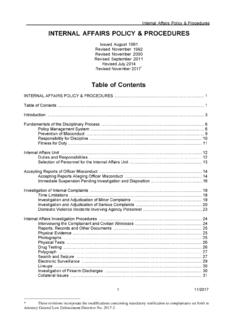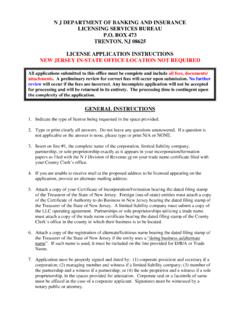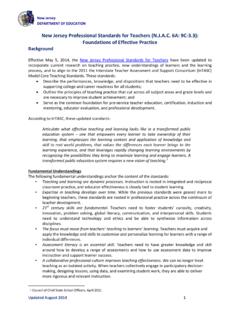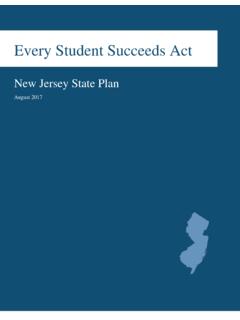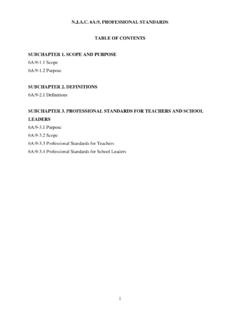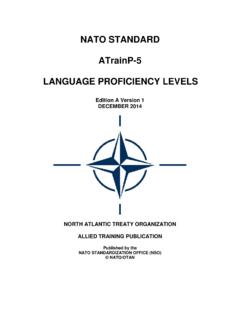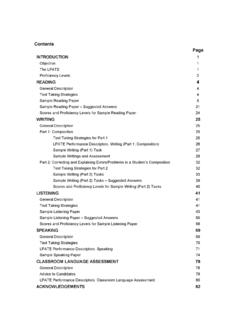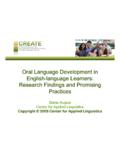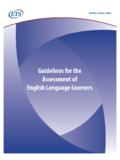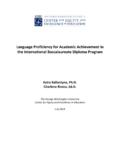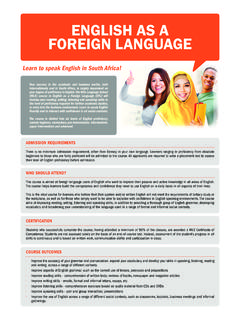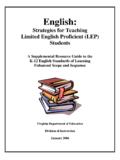Transcription of New Jersey Student Learning Standard for World …
1 1 New Jersey Student Learning Standard for World Languages INTRODUCTION World Languages Education in the 21st Century New Jersey citizens are part of a dynamic, interconnected, and technologically driven global society centered on the creation and communication of knowledge and ideas across geographical, cultural, and linguistic borders. Individuals who effectively communicate in more than one language , with an appropriate understanding of cultural contexts, are globally literate and possess the attributes reflected in the mission and vision for World languages education that follow: Mission: The study of another language and culture enables individuals, whether functioning as citizens or workers, to communicate face-to-face and by virtual means in appropriate ways with people from diverse cultures.
2 Vision: An education in World languages fosters a population that: Communicates in more than one language with the levels of language proficiency that are required to function in a variety of occupations and careers in the contemporary workplace. Exhibits attitudes, values, and skills that indicate a positive disposition and understanding of cultural differences and that enhance cross-cultural communication. These two infographics illustrate the connections between the global economy of New Jersey and the nation as a whole. ( ) 2 Values language Learning as a global literacy as well as for its long-term worth in fostering personal, work-related, and/or financial success in our increasingly interconnected World .
3 Intent and Spirit of the World Languages Standard The study of World languages is spiraling and recursive and aligned to appropriate proficiency targets that ultimately enable the attainment of proficiency at the Novice-High level or above, which is a requirement for high school graduation. All students have regular, sequential instruction in one or more World languages beginning in preschool or kindergarten and continuing at least through the freshman year of high school. Further, 6 (b)4 directs districts to actively encourage all students who otherwise meet the current-year requirement for high school graduation to accrue, during each year of enrollment, five credits in World languages aimed at preparation for entrance into postsecondary programs or 21st-century careers.
4 Opportunities to develop higher levels of proficiency should be based on personal and career interests and should be encouraged in Personalized Student Learning Plans. The number of years spent studying a language and the frequency of instruction impact the level of proficiency acquired in the language . This principle has historically been supported by research in the United States and abroad. However, as part of a three-year grant project (2005-08), the New Jersey Department of Education collected data from New Jersey schools that further support these research findings.
5 Data from the federally funded project that assessed the language proficiency of 60,000 8th-grade students present compelling evidence for the need to develop programs that offer all students the opportunity to meet the state-designated proficiency level of Novice-High. The data show that programs offering a minimum of 540 hours of articulated instruction in classes that meet at least three times a week throughout the academic year produce a majority of students who can speak at the Novice-High proficiency level or higher. Consequently, the establishment and/or maintenance of quality, well- articulated language programs at the elementary and middle-school levels , as required by New Jersey Administrative Code, is critical for building the capacity of high school students to achieve the Novice-High level of language proficiency required for graduation.
6 Revised Standard Although the Standard for World Languages was adopted in 2009, it only became fully operational as of September 2012. Following the revision of the Standard groups of educators convened to develop support materials to assist other educators in implementing the Standard . These resources include the Classroom Application documents, the 21st Century Model Unit, the World language Standard in Action documents, and the Model Curriculum. These materials contain instructional guidance and assessment examples to help educators in implementing the Standard with fidelity.
7 Furthermore, the New Jersey Educator Resource Exchange provides a venue for educators to share additional support materials. In Outliers: The Story of Success (2008), Gladwell emphasizes the role that practice plays in improving performance. By readopting the Standard in its current form with minor changes, educators have the opportunity to improve their practice by focusing on a target that remains constant. The intent of the Department is to continue to provide resources to assist educators. Thus, the annotated glossary and related resources component, while still connected to the Standard , has been removed as part of the Standard and will serve as a living document that can be updated as appropriate.
8 We know that when students have the opportunity to transfer skills across content areas the Learning becomes deeper and more enduring. There is a strong link between the New Jersey students Learning Standard for English language Arts and Literacy in History/Social Studies, Science, and Technical Subjects and the New Jersey Student Learning Standard for World Languages. 3 language proficiency levels Unlike other content areas, the World languages Standard is benchmarked by proficiency levels . In this iteration of the Standard , grade level performance benchmarks are also included.
9 Below is a chart from ACTFL Performance Descriptors for language Learners 2012 that shows how assessing for performance is different from assessing for proficiency . The development of these proficiency levels was informed by the American Council on the Teaching of Foreign Languages (ACTFL) Performance Guidelines for K-12 Learners (ACTFL, 1998), the ACTFL proficiency Guidelines Speaking (ACTFL, 1999), and the ACTFL proficiency Guidelines Writing (ACTFL, 2001) and is supported by more recently released documents including the ACTFL Performance Descriptors for language Learners 2012 and ACTFL proficiency Guidelines 2012.
10 Below is a short summary of each proficiency level included in the Standard document: Novice-Mid Level: students communicate using memorized words and phrases to talk about familiar topics related to school, home, and the community. Novice-High Level: students communicate using words, lists, and simple sentences to ask and answer questions, to handle simple transactions related to everyday life, and to talk about subject matter studied in other classes. Intermediate-Low Level: students communicate using simple sentences to ask and answer questions, to handle simple transactions related to everyday life, and to talk about subject matter studied in other classes.
